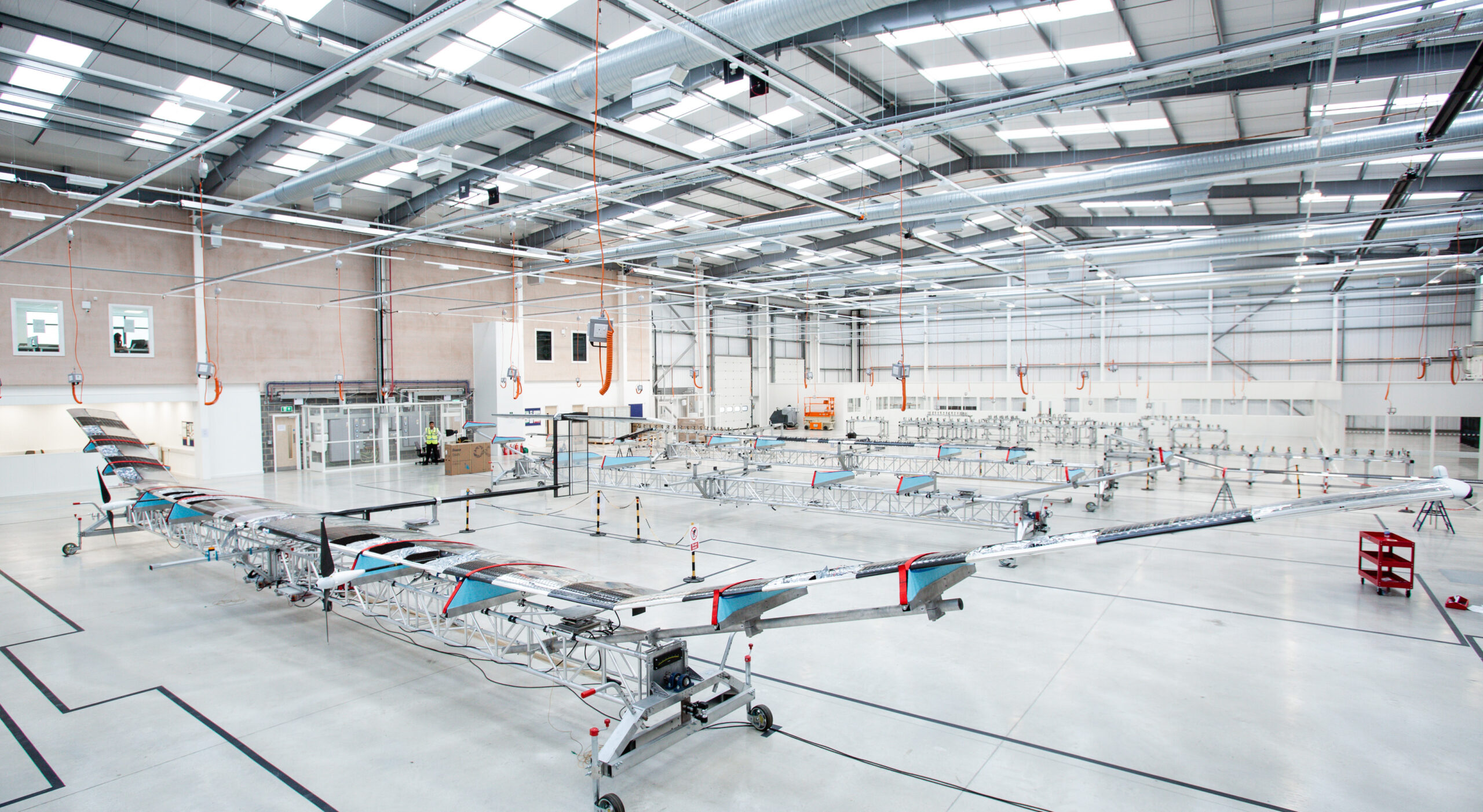Stay Up to Date
Submit your email address to receive the latest industry and Aerospace America news.
Airbus begins mass production of solar-powered unmanned aircraft.
FARNBOROUGH AIRSHOW, U.K. – Airbus Defense and Space has begun mass producing Zephyr S solar-powered unmanned aircraft at a newly unveiled facility next to the Farnborough Airport.
Meanwhile, high over Arizona one of the planes is in the midst of trying to shatter the endurance record of a previous version of Zephyr.
The flight that began last week over Arizona is intended to prove that Zephyr S can cruise at an altitude of about 70,000 feet for weeks at a time. A previous version of Zephyr flew for 14 days. Airbus thinks that Zephyr S planes can ply the stratosphere to provide services traditionally offered by satellites, including internet connectivity and Earth imaging. The version flying now over Arizona, dubbed Kelleher, is carrying an Earth imaging camera.
The test aircraft and the new facility bear the name Kelleher in honor of Chris Kelleher, who designed the first version of the Zephyr in 2003. Kelleher died in 2015.
Airbus is building the sixth Zephyr S at the Kelleher facility and aims to have nine built by early next year, said Jana Rosenmann, head of the unmanned aerial systems program at Airbus.
Zephyr S was designed without a specific payload in mind, so that companies can custom build instruments and pay Airbus to fly and operate the instrument service for them.
Each Zephyr S has two motors and propellers that are powered by electricity drawn from solar cells on top of the wings. Energy is stored in lithium ion batteries so that the plane can continue flying at night. Airbus wants Zephyrs eventually to cruise for up to 100 days.
Airbus is among the companies competing to fly payloads on high altitude aircraft or balloons as a cheaper alternative to satellites. Zephyr S has flexibility compared to a satellite because “you can land and put a different payload on, and you can re-task it to a different area,” Sophie Thomas, program manager of the Zephyr for Airbus, tells me.
Internet connectivity is the main commercial market Airbus is targeting, Rosenmann told reporters, adding “we believe it could be a game changer for millions of people around the world.”
Facebook in 2014 began developing a solar-powered drone named Aquila that would fly in the stratosphere, but canceled that project in June, saying it would leave production of such aircraft to aerospace companies amid increased industry development of stratospheric aircraft. Rosenmann said “we collaborate very closely with Facebook” about how to integrate payloads onto Zephyr S that would provide wireless spectrum to remote areas. The two companies are also in discussion about how to win approval from regulators for flights in the stratosphere, Rosenmann said.
“The Aquila was heavier and they were aiming for a heavier payload,” Rosenmann said, comparing Facebook’s defunct prototype drone with Zephyr S.
Zephyr’s maximum weight is 75 kilograms. To get the plane airborne, three to five people jog with it while its propellers are turning. Airbus eventually plans to develop an automatic method of providing the initial lift for takeoff.
In the image above, mass production of Airbus Zephyr S aircraft is underway at the Airbus Kelleher facility next to Farnborough Airport in the U.K.
About Tom Risen
As our staff reporter from 2017-2018, Tom covered breaking news and wrote features. He has reported for U.S. News & World Report, Slate and Atlantic Media.
Related Posts
Stay Up to Date
Submit your email address to receive the latest industry and Aerospace America news.




